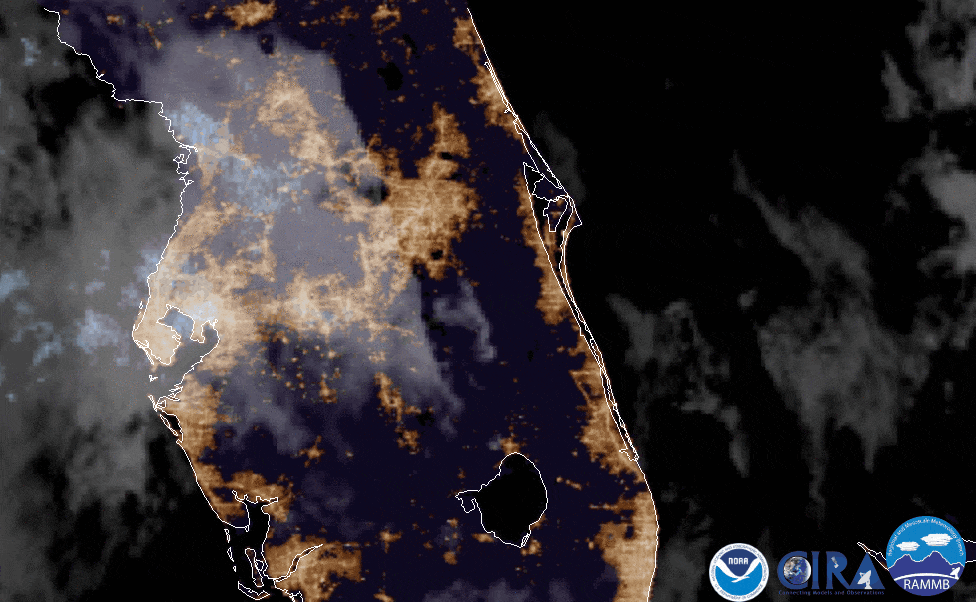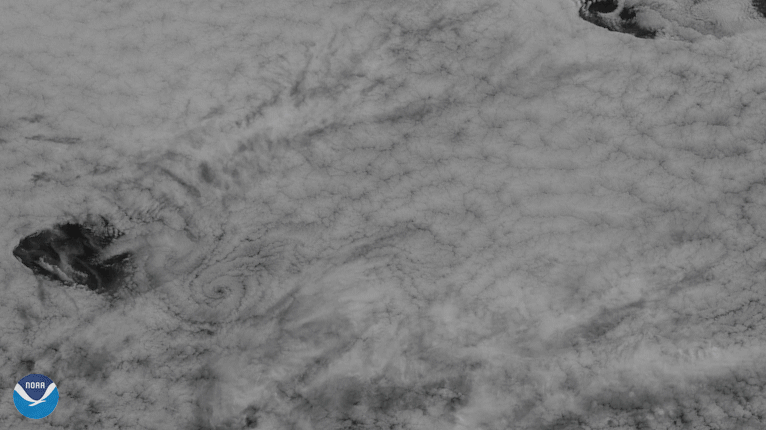Staring Down at the Clouds
Clouds form from water or ice that has evaporated from Earth’s surface, or from plants that give off water and oxygen as a product of photosynthesis. When it evaporates—that is, rises from Earth’s surface into the atmosphere—water is in the form of a gas, water vapor. Water vapor turns into clouds when it cools and condenses—that is, turns back into liquid water or ice. All clouds are made up of basically the same thing (water droplets or ice crystals that float in the sky) but all clouds look a bit different from one another.

There are many types of clouds. NOAA satellites help us study them.
Common Cloud Types
Marine stratocumulus form over open water. There are two types of these clouds: either closed- or open- celled, depending on current cloud cover. Common in the South Pacific, meteorologists believe the globe's circulation may be a factor in their formation.
Marine stratocumulus
Wave clouds, or gravity waves, are similar to what happens when you drop a stone into a calm pond. Just like waves form in the ocean or a lake when water is disturbed, waves also form in the atmosphere when air is disturbed.
Wave clouds
In satellite meteorology, a rope cloud is a very long narrow, rope-like band of cumulus cloud formations. These clouds are sometimes visible in satellite imagery along a changing weather front or other boundaries.
Rope Clouds
Fallstreak (also known as hole punch) clouds are formed when the water temperature in the cloud is below freezing but has not frozen. When sections of the water start to freeze, the surrounding water vapor will also freeze and descend. This leaves a rounded hole in the cloud.
Fallstreak clouds
von Kármán vortices can occur anywhere that fluid is disturbed by an object. When prevailing winds are forced to move around an elevated surface, they change direction, causing the air and clouds to flow in curved streamlines around it.
von Kármán vortices
Cloud streets have the form of an extended line of cumulus clouds almost parallel to a constant wind direction, produced in an air mass in which the convection layer has a well-marked top.
Cloud streets
Ship tracks are formed when cargo ships travel across the ocean, and tiny aerosol particles (especially sulfates) in their exhaust act as cloud condensation nuclei where moisture in the atmosphere can condense.
Ship tracks
More Articles on Clouds
-
The Himawari-9 satellite, captured imagery of polar mesospheric clouds—also known as noctilucent…
-
NOAA’s GOES East satellite used its Advanced Baseline Imager to capture this mesmerizing GeoColor…
-
NOAA satellites are closely monitoring a strong atmospheric river that has been bringing excessive…






